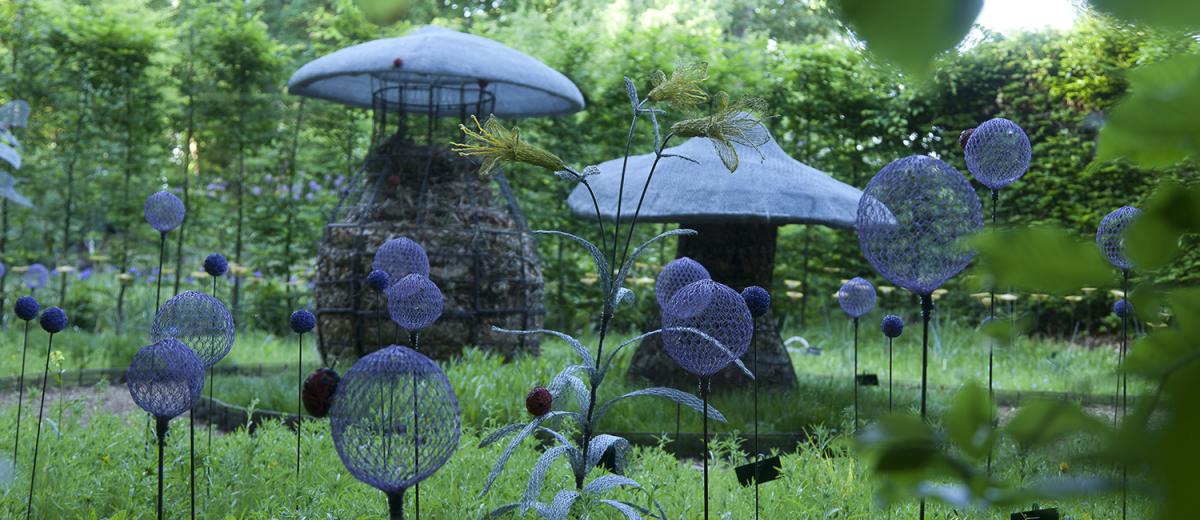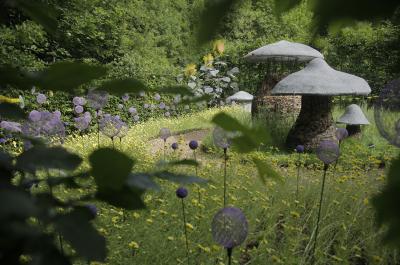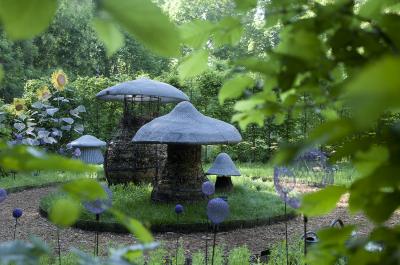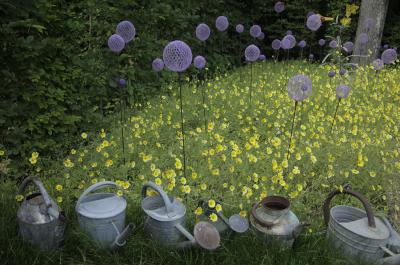The principle of this inventive garden is simple: “sculptillonnage”, referring to “hortillonnages” [plots in marsh areas used for market gardening], is a plant or animal sculpture which shows gardeners the spaces for biodiversity, the limits of their cutting, the rotations, etc., while outlining an artistic and undulating shape. In addition to its aesthetic aspect, it serves as an animal shelter, providing food and drink and making life easier in the garden for all its helpers. It is made of a simple, rustic material, wire netting with a hexagonal mesh, adapted from its original use in poultry rearing.
“Champicomposteurs” are key players in this garden, performing the process of decomposing organic matter to give rebirth. They give both young and old a simple, smiling image of composting, which means it is no longer a constraint or a cost in terms of time and energy. The way they are filled is part of the work and varies: the large one is filled with grass cuttings, with waste collected and chopped up, alternating the layers to adhere to the best Carbon-Nitrogen ratio and highlight the aesthetics of textures and colours, another is opaque and uses anaerobic bacteria (which do not need oxygen to develop), the small one is only filled with RCW (ramila chipped wood).
Other artistic innovations to benefit animals: the “Papiliolilium” (a watering place for butterflies), the “Soliculusinsectus” (a sunflower shelter for solitary bees), garlic flower, wire netting flower (a food store for birds), ladybirds and a green aphid.
A collection of old watering cans means water is present in this garden, reminding us of the importance of human influence in gardens.
Combining artistic creation and sustainable development and glorifying the Gardener’s role in biodiversity are this garden’s twin challenges.
DESIGNERS
Corinne JULHIET-DÉTROYAT, landscape architect and Claude PASQUER, government approved landscape architect,
FRANCE
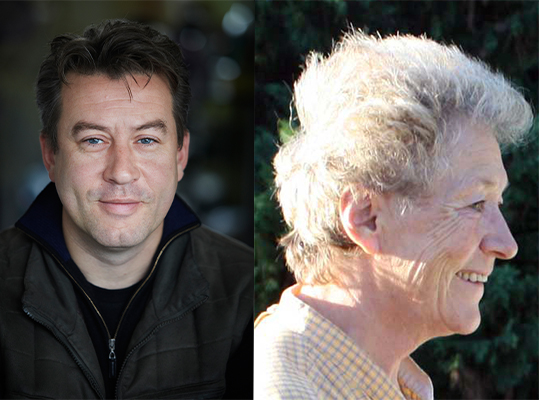
Corinne Julhiet-Détroyat is a landscape architect with a diploma from the École Nationale Supérieure du Paysage [National Higher Institute for Landscape] in Versailles, who gradually specialised in the gardens of Provence, up to the point where she put down her roots in the area around Vaucluse. Her initial training as a psychologist and her experience of over 25 years as a company director served as a framework for her to pay more attention to nature and listen to it more carefully. The constraints of this climate and the slope of the land have given her a pretext to reveal space in a different way from the standard garden models, to combine internal and external landscape, by seeking out rustic plants, by economising on watering and by presenting old objects and giving them new life “in the garden”. Her priority is respect for the Provençal landscape, with its dry stone wall terraces known as ‘restanques’, its stones and its views of the Luberon.
Claude Pasquer is a government approved landscape architect with a diploma from the École Nationale Supérieure du Paysage [National Higher Institute for Landscape] in Versailles, who has been working professionally in landscaping for 18 years and more particularly, in development and restoration work in protected areas. He is involved in the provision of vocational training at the Versailles School and is in charge of the “Croquis du Jardin” [Garden Sketch] course. For 8 years he has been working on reinventing Garden Sculpture, with his favourite medium being a simple material: hexagonal wire netting. He shapes it, cuts it and compresses it to give life to a new vocabulary. His approach is part of a dynamic process moving in the direction of “natural" gardening and sustainable development.
